Leading the Revolution: Reinventing business in a fast-changing world … Introducing the Global Advanced Management Program 2025-26 … the world’s best program for leaders stepping up to lead the future
July 1, 2025
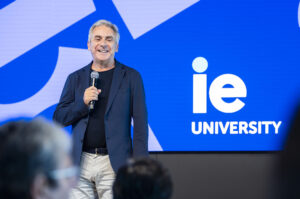
What do business leaders need, or indeed want? Not another executive education course.
What they seek is a strategic reawakening. Because the future is here, yet much of its potential is still unrealised. It is a program that helps you to reinvent yourself, and your business, for a radically different world. It is an immersive, boundary-breaking program designed for senior business leaders who refuse to stand still. In a world of relentless change, exponential technologies, and the rise of next-generation companies, this is where transformation begins.
Why? Because today’s playbooks are broken. Global business is no longer about scale, but about speed. It’s no longer about optimization, but reinvention. It’s about thriving in an uncertain, complex world with new technologies and possibilities which demand new capabilities and mindsets. Market leaders today are agile, tech-native, purpose-driven, and constantly evolving. Are you ready to lead a business that can outpace disruption — and shape the future?
Who? Leaders who are ready to reinvent themselves, and their organisations. This is a program for current and aspiring C-level executives. And boards too. Heads of innovation, digital, strategy, sustainability. And more. People stepping up to explore new possibilities, ready to lead their business beyond, and shape a better future.
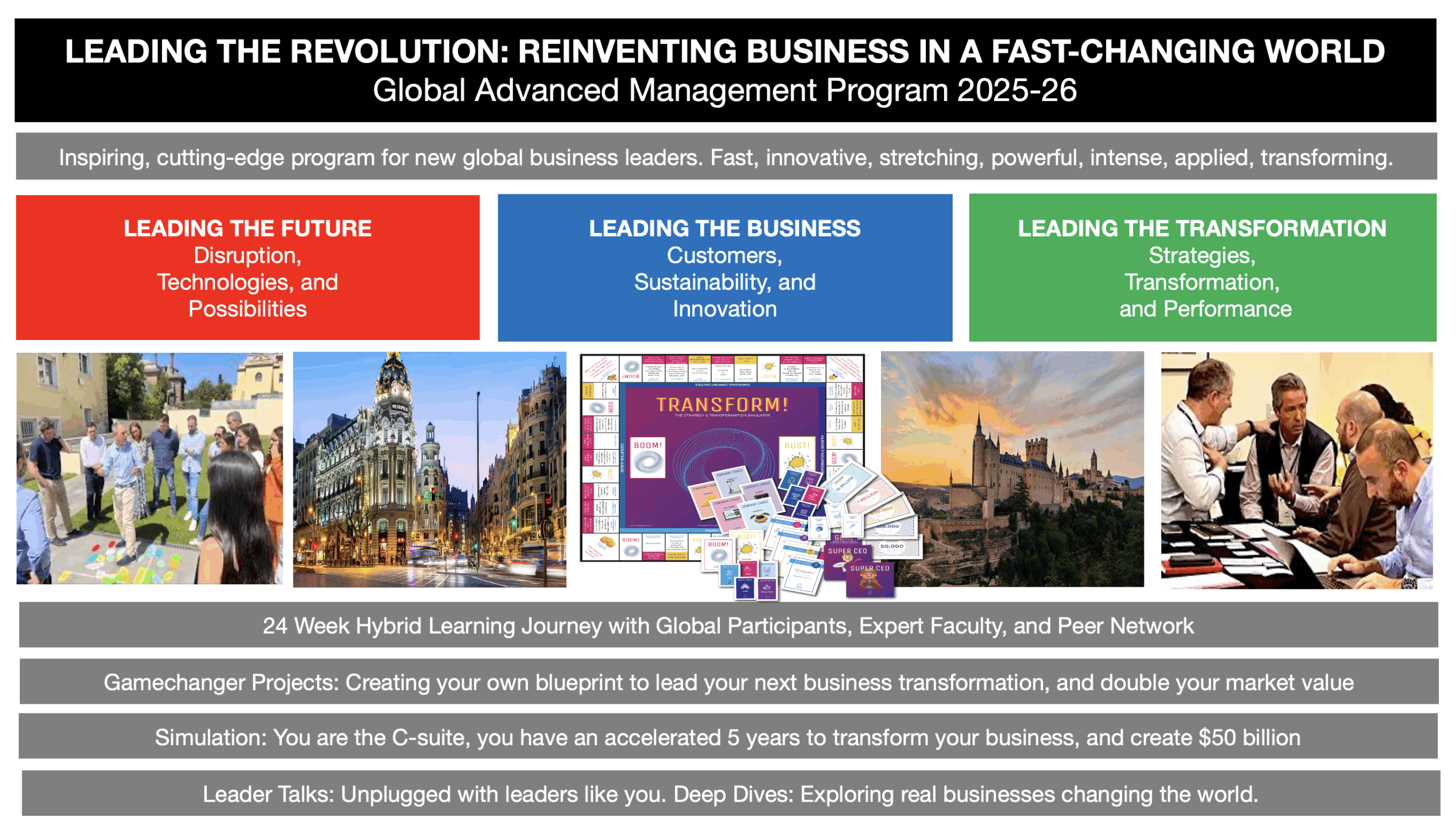
Reinventing business, reinventing yourself
In a world defined by relentless change and rising complexity, a new breed of businesses is emerging—ambitious, restless, and unapologetically visionary.
These companies are addicted to possibility, obsessed with the edges of tomorrow, and committed to turning what’s possible into what’s next. They don’t just chase trends—they shape the future, pioneering radical innovations that reinvent markets, solve global challenges, and unlock extraordinary value.
Moonshot thinking—once the realm of sci-fi dreamers and NASA engineers—is now the strategic DNA of the most disruptive and admired companies. Alphabet’s X (formerly Google X), Tesla, OpenAI, SpaceX, DeepMind, Moderna, and ambitious upstarts like Anduril, Neuralink, and Twelve are bold exemplars of this mindset.
These businesses are defined by their drive to achieve 10x improvements over 10% gains. They ask “Why not?” instead of “What if?”, and challenge the limits of what’s considered feasible—whether by launching reusable rockets, eradicating disease, creating human-AI symbiosis, or designing carbon-negative fuels.
A unique leadership journey
The Global AMP is an executive program that goes beyond text books, MBAs and conventional practice. It becomes a stretching immersion into the next world of business, starting in the future, then evolving to today. In particular it focuses on transformation – the radically reinvention of business, and of yourself as a leader. What got you here is unlikely to take you further. It requires disruption, imagination and change. In fact business transformation is probably the superpower of today’s most successful leaders.
- How will the markets of the future, be shaped by the best innovators of today?
- What are the best ways to imagine your future markets, and plot your strategies from the future back?
- How do you engage your people, your board, your investors, and other stakeholders?
- What are the critical assets, capabilities and resources that will be most important in the transformation?
Each year, for the last 7 years, we have brought together 24-30 business leaders from around the world – different countries, different sectors, different backgrounds. But with an aspiration to lead the future of their organisations. Some are from large corporates, some from start-ups. Everyone is stepping up, to think different, to create and deliver innovation, to lead.

Building your new toolkit
Here are some of the most influential and emerging ideas in business, each reflecting the complex, fast-changing, and interconnected business landscape. These ideas go beyond traditional models to embrace uncertainty, systemic thinking, and value creation across new dimensions:
1. Ambidextrous Organizations
Key Idea: Winning firms are both efficient and innovative—exploiting existing capabilities while exploring new opportunities.
Thinkers: Charles O’Reilly & Michael Tushman
Application: IBM structuring separate units to run legacy systems vs. cloud/AI innovation; Amazon Web Services run autonomously from core retail.
Strategic Impact: Provides a model for structural balance, managing today’s business (exploit) while building the future (explore), and a double portfolio to optimise the two approaches.
2. Strategic Foresight
Key Idea: Strategy is no longer just based on forecasts, but on cultivating multiple future scenarios and building resilience, optionality, and adaptability.
Thinkers: Pierre Wack (Shell), Amy Webb (Future Today Institute)
Application: Shell’s scenario planning since the 1970s; LEGO’s Futures Lab building new play concepts.
Strategic Impact: Embeds uncertainty and weak signal detection into strategic planning.
3. Extreme Options
Key Idea: Balance between two extremes—hyper-conservative and hyper-risk-taking—to remain resilient in volatile environments.
Thinkers: Nassim Nicholas Taleb
Application: Amazon betting big on Alexa and AWS while optimizing retail margins; asset managers combining safe bonds with speculative crypto.
Strategic Impact: Helps organizations survive shocks while capturing upside from high-risk innovations.
4. Dynamic Capabilities
Key Idea: Competitive advantage lies not in static assets, but in a company’s ability to adapt, reconfigure, and innovate repeatedly in response to fast-changing environments.
Thinkers: David Teece, Gary Pisano
Application: Apple’s ability to transition from computers to music, phones, and services; Amazon continuously adapting its logistics and cloud strategy.
Strategic Impact: Shifts the focus of strategy from long-term planning to continuous renewal, learning, and responsiveness.
5. Ecosystem Building
Key Idea: Value creation happens within interdependent systems of organizations that co-evolve—success depends on aligning with partners, not just beating competitors.
Thinkers: Ron Adner (The Wide Lens), James Moore
Application: Tesla’s ecosystem of electric cars, charging infrastructure, energy storage, and solar tech.
Strategic Impact: Encourages companies to think systemically, innovate with others, and solve coordination challenges that affect adoption.
6. Ethical Foresight
Key Idea: Business strategy must include ethical foresight, not just profits—asking, “What kind of future are we enabling or preventing?”
Thinkers: Amartya Sen, Rebecca Henderson
Application: Microsoft refusing to sell facial recognition to law enforcement; Patagonia suing the US government over environmental policy.
Strategic Impact: Anchors strategy in values and systems thinking, especially amid rising stakeholder scrutiny.
7. Exponential Growth
Key Idea: Many technologies evolve on exponential curves—winning companies anticipate these curves, disrupt themselves, and scale rapidly.
Thinkers: Ray Kurzweil, Salim Ismail (Exponential Organizations)
Application: SpaceX’s 10x cost reduction in launches; OpenAI’s pursuit of general intelligence.
Strategic Impact: Encourages moonshot thinking, agile scaling, and bold bets—especially in tech-heavy industries.
8. Intangible Assets
Key Idea: The drivers of value today are mostly intangible—brands, data, IP, culture, trust—and require new methods to develop and manage.
Thinkers: Jonathan Haskel & Stian Westlake (Capitalism without Capital), Baruch Lev
Application: Apple’s brand ecosystem; Google’s AI algorithms; Salesforce’s customer success culture.
Strategic Impact: Reframes strategic advantage around invisible capabilities—and calls for better ways to measure value creation.
9. Strategic AI
Key Idea: Strategy is increasingly co-designed with intelligent systems—for pattern detection, simulations, and complex decision-making.
Thinkers: Rita McGrath, BCG Henderson Institute
Application: McKinsey using AI to analyze M&A patterns; Ocado leveraging AI for warehouse optimization.
Strategic Impact: Enhances human judgment with scalable, data-driven insights and scenario modeling.
10. Platform Strategies
Key Idea: Rather than controlling value chains, firms create value by enabling exchanges between users, producers, and partners through platforms.
Thinkers: Geoffrey Parker, Marshall Van Alstyne, Sangeet Paul Choudary
Application: Amazon Marketplace, Google Ads, Airbnb, and TikTok all succeed by leveraging two-sided (or multi-sided) networks.
Strategic Impact: Prioritizes network effects, user experience, and ecosystem orchestration over traditional supply chain control.
11. Polarity Management
Key Idea: Strategic tensions (e.g., scale vs. intimacy, speed vs. stability) are not problems to solve but polarities to manage dynamically.
Thinkers: Barry Johnson
Application: Netflix managing centralization of platform with decentralization of content creation.
Strategic Impact: Moves leaders beyond binary trade-offs to dynamic balance.
12. Purposeful Business
Key Idea: Companies with a clear and authentic purpose outperform over the long term, gaining trust, talent, and resilience.
Thinkers: Paul Polman, Rebecca Henderson (Reimagining Capitalism)
Application: Unilever’s Sustainable Living Plan; Patagonia’s mission “We’re in business to save our home planet.”
Strategic Impact: Aligns strategy with values, attracts stakeholders, and drives differentiation in crowded markets.
13. Regenerative Business
Key Idea: Move beyond sustainability and circularity to become net-positive—restoring and regenerating natural, social, and economic systems.
Thinkers: John Elkington, Carol Sanford
Application: Interface and Patagonia embedding regeneration into core strategy—not just reducing harm but creating system-level value.
Strategic Impact: Encourages long-termism, stakeholder capitalism, and a shift from extractive to generative business models.
14. Strategic Narratives
Key Idea: Strategy is not just logic—it’s storytelling that aligns people around vision, values, and purpose to drive collective action.
Thinkers: Steve Denning, Simon Sinek
Application: Microsoft’s “empower every person” purpose under Satya Nadella; Airbnb’s “belong anywhere” narrative.
Strategic Impact: Builds emotional commitment, brand resonance, and internal alignment.
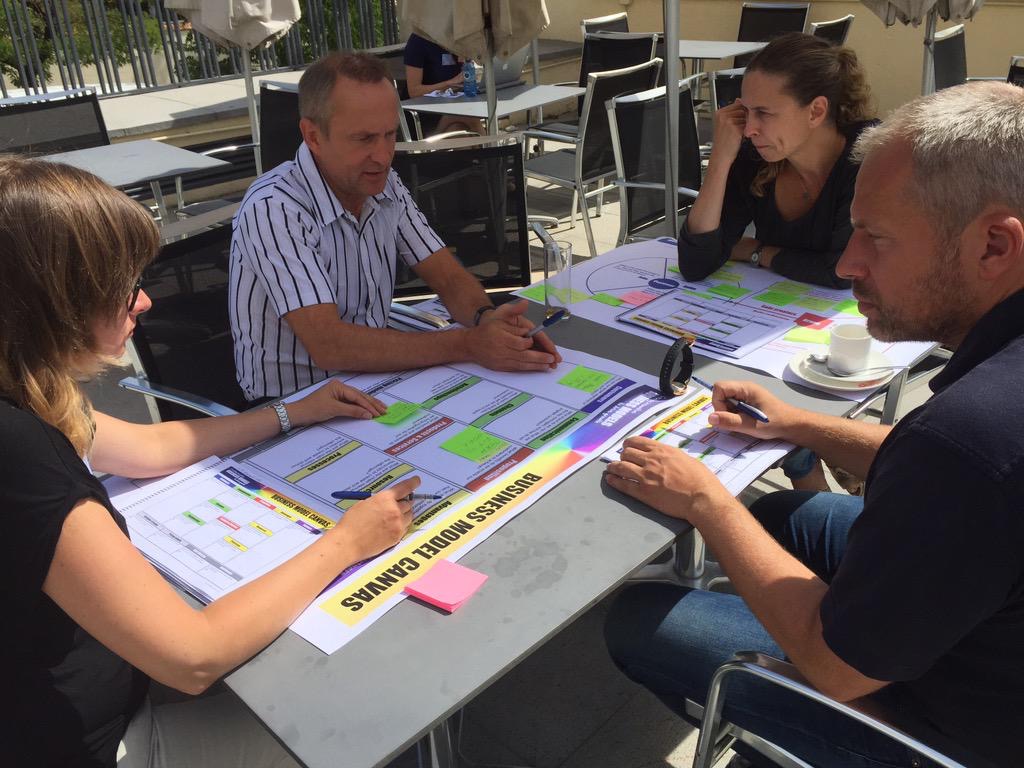
The Global AMP program is for hungry business leaders, typically aged 35-50 years old, currently working 1-2 levels below the C-suite, who are ready to create a better future – for their business, and themselves.
Each year the group of 24-30 participants come from across the world, and across sectors – from Argentina and Algeria, Belgium and Brazil, Canada and Colombia, Germany and Guatemala, Jordan and Japan, Nigeria and Netherlands, Switzerland and Spain, UAE and USA – construction and chemicals, energy and education, finance and fashion, pharmaceuticals and payments, telecoms and tech.
“So honored to be part of this program, and having gone through this learning journey with such a courageous, talented and inspiring group of leaders – now friends – from all over the world. It gave us a unique space to step out of our comfort zones, think about the future, transform our businesses and ourselves. Here’s to our futures!” Alexandra Miranda Bao, COO, Citi, Costa Rica.
“An amazing experience with an amazing group of friends, together we have completed a fantastic learning journey, by graduating last week from one of the best executive programs, the Global AMP in Madrid after presenting the gamechanger projects, showcasing disruptive models to reshape the business world in many industries. our new resolution is to embark ourselves and our organizations on a constant transformational journey by leading from the future.” Omar Korshid, Technical Director, Heidelberg Cement, Egypt.
Perform and transform, exploit and explore, great gamechanger projects and amazing last week in Madrid. The best, the amazing people and good friends met along the program. Finally the Global Advance Management Program is over but a brilliant future is ahead of us.” Manuel Gariddo Gellado, Corporate Sales Director, GRI Renewables, Spain.
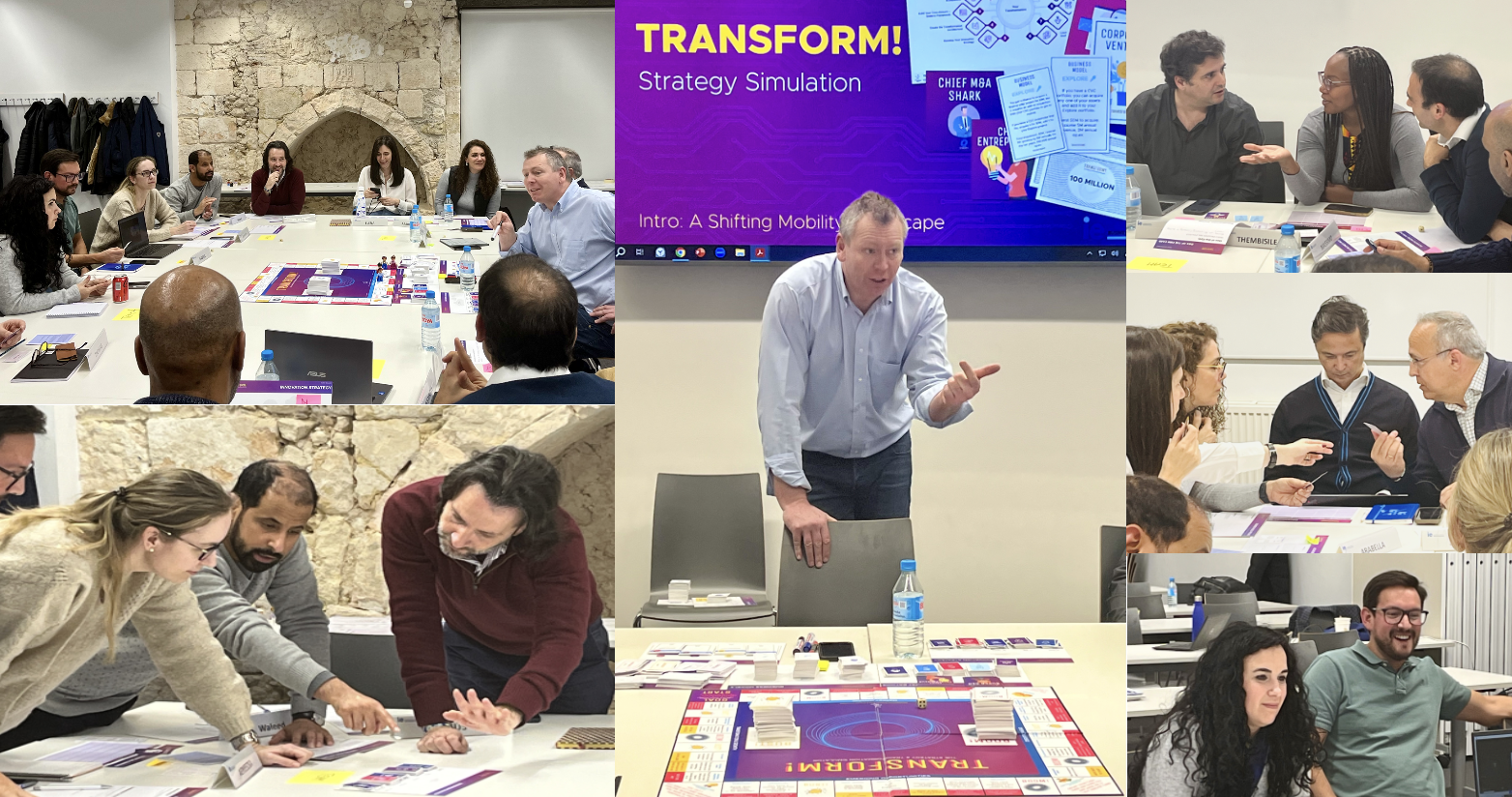
Business transformation is at the centre of the program – creating a blueprint for their future business, that seizes then opportunities of change, that reinvents externally and internally, exploits now and explores next, and has the potential to create a step change in value creation.
We could, of course, simply explore this in a series of topical modules, with theoretical frameworks and inspiring case studies. But we wanted to do more: to prepare participants for the future, explore new market spaces, innovative strategies and business models, address inevitable shocks and disruptions, and perhaps most importantly to work as an effective C-level team.
The Transform! business simulation is challenging and demanding, interactive and fun, and itself transformational.
Let’s imagine the future of the automotive industry – or mobility, as you could reframe it. In 4-5 teams, they appoint their CEOs, CFOs, and more. How will their team outthink the others? Who will develop the most effective business models? How will they manage strategy, start-ups, finance, acquisitions, boards, people, and more?
Business transformation, of course, is typically a multi-year journey. To reinvent the business, to double or maybe triple its market value. So how can you simulate this? We created a hybrid journey, starting face to face, then moving online, and back together. Years became weeks. Demanding fast decisions, and fast learning. How to create a P&L, brief analysts, acquire a business, address the unions, invest in a new technology, right now?
Having explored future megatrends, emerging technologies, new approaches to strategy, and innovative business models, with expert faculty, the Transform! simulation put it all into action. Fast, furious and fun!
Which company could transform itself, capture the new markets, and create $60 billion market cap first?
With coaching and collaboration, the teams found their ways to survive and thrive in a future world, which could be theirs in reality very soon. The conceptual ideas of previous months learning modules became real and relevant. They explored the different roles of leadership, and also learnt much about themselves.
As the 6 month learning journey came to a close the simulation was seen as a pivotal moment in how participants saw the future, and their potential in it. Their minds were opened to new possibilities, they were shaken out of their comfort zones, they appreciated what it takes to create and lead transformation. And they grew incredibly bonded as a team.
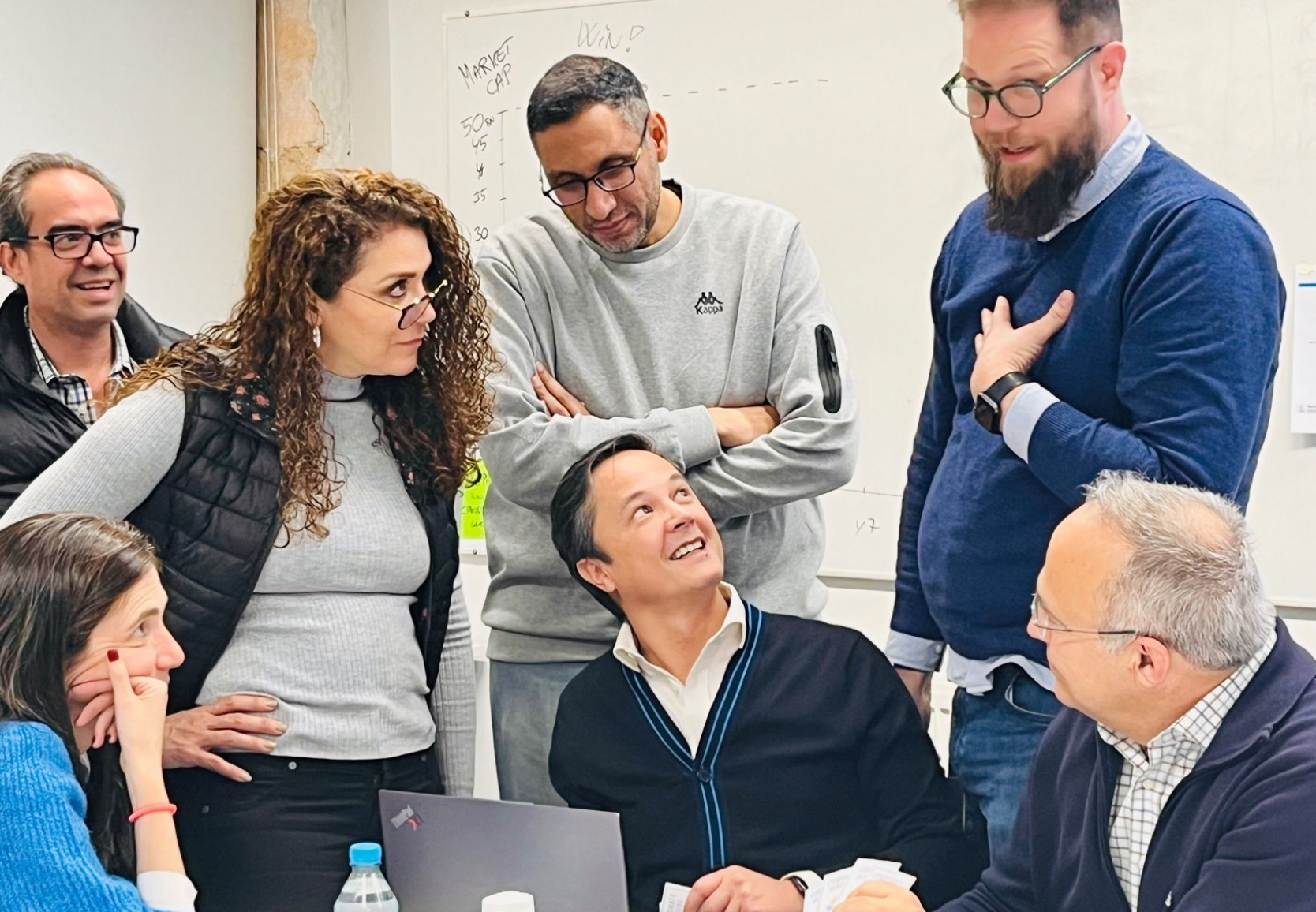
However this program is not just about theory or simulation, it’s about the real world, your real business, and your future.
The Gamechanger Projects are individual project work that run through the 6 month duration of the program, with coaching and support, applying all the best ideas practically to your own potential future. How do you see the future of your industry? How would you take your business beyond its current strategy, maybe beyond the minds of its current leaders? What is your practical blueprint for vision and transformation that you can take back to your business (or new business) and use it as a confident platform to start making your future happen.
Some of this year’s Gamechanger projects included:
In the Netherlands, the national Dutch Lottery has become increasingly concerned about gambling addiction. As a responsible gaming platform, the project seeks to shift towards skills-based games that attract new audiences, demand more expertise, and are also more profitable. This will be based around a Skills Arena, a new gaming environment to engage the best gamers.
Aramark, based in USA, is one of the world’s leading facilities management companies offering services from catering to cleaning to the world’s offices, malls, schools, hospitals and more. Technology, and in particular AI, creates the opportunity to radically reinvent the business – enhancing humanity, anticipating customer needs, and transforming user experiences. In this way the business can transform its role from cost-driven service provider to added-value enabler.
Digital technologies have dehumanised crafts. With a background in the craftsmanship of luxury brands, this Open Crafts from Spain project seeks to create a modern School of Crafts – from artisans to architects, designers and dressmakers – how to create a renaissance in crafts through a platform that combines education and training, with inspiration and practices, and a new marketplace.
South Africa‘s leading bank, Standard Bank, care about much more than just money. It’s purpose is to transform African society, including though enabling Africa’s energy transition. The project specifically focuses on creating new opportunities for small businesses to adopt clean energy through new funding and payment models, and linking to other services too.
Peru‘s leading machinery supplier Grupo Maquinarias has a fundamental challenge in reinventing strategy, particularly in a family business. Cheap imported brands have disrupted the market, and decimated margins. This project is about reimagining the future of mobility and devices, creating a platform for suppliers and customers, with subscription based rentals.
Sleep is a luxury for any parent with new babies. Swedish business Nurtured Sleep is a start-up born from sleepless nights, initially as a coaching service to new parents. However sleep technologies have proliferated, demanding an ecosystem that brings together all the best science, devices, support and analytics. It becomes the Strava of sleep, doubling your sleep, and dramatically improving parenthood.
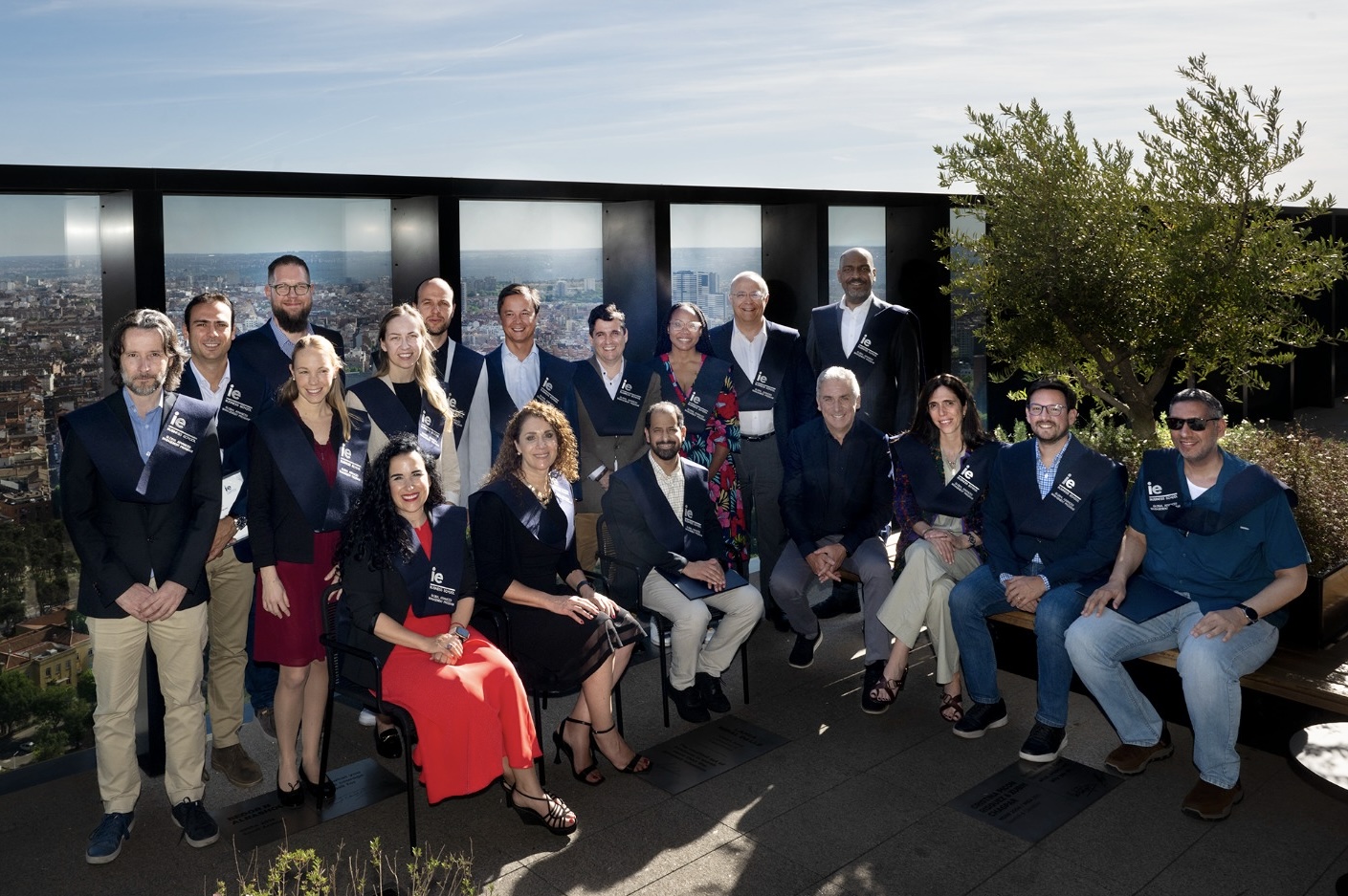
Join us next year!
More from the blog